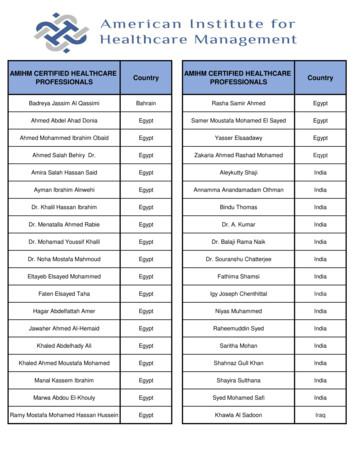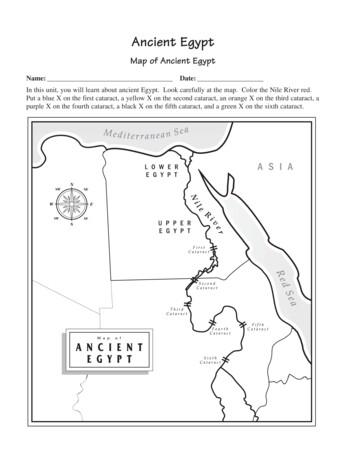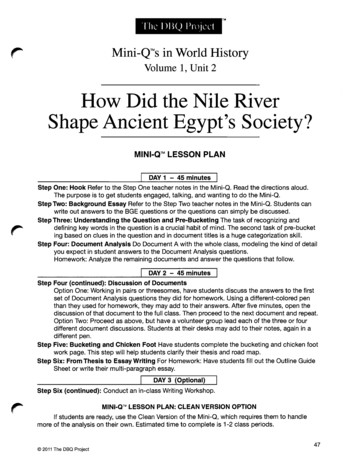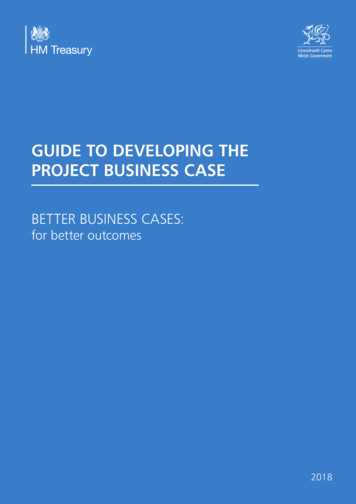Ancient Egypt Stations E15
StudentCentered& commonCore6 Ancient EgyptReading Stations withActivity Options & CommonCore Questions
StudentCentered& commonCoreIncludes: 6 Reading Stations,Printable Common CoreQuestions, Station Signs &Teacher Instructions
Ancient Egypt Stations Teacher NotesThis activity is designed for students to investigate different aspects of Ancient Greece byreading and extracting important information. Students answer questions on the bottom ofeach station reading on their own paper. Consider instructing the students to write the nameof the station at the top of each question set for quick reference.Some ideas for setting up stations:1. Stations Option - Arrange desks so there are seven stations. Place resources on eachstation (you may want to make enough copies, so each student has a page). Studentsread and answer questions in groups at the rate of about six minutes per station.Students switch stations after six minutes. It helps to pre-determine the order of stationprogression, so there is an even amount of students at each station, and so there is lessconfusion when students are told to switch stations. Consider if skipping ahead isacceptable (I often do not allow it, so it is less competitive to finish).2. Task Card Option - Copy several copies of each station and place the resources at acentral spot in your room. Students use resources one at a time as needed until allstations have been completed.3. Jigsaw Groups of Four Option - Assign each group member a reading. Students read his/her assigned reading and share with his/her group. Students answer questions together.4. The Ancient Egypt two page notes graphic organizer that comes with the bundle can alsobe used during this activity for a fill in the blank option.5. A foldable graphic organizer was added for a Common Core creative option. See the endof this packet for directions.
Geography Of Ancient EgyptGeography-Physical environment and how it may influence an economy and culture.The Nile runs through the entirety of Egypt, and it is 4160 miles long, making it the longest river inthe world. It flows north, beginning in East-central Africa, ending when it reaches the Mediterranean Sea.Rainfall gathered in the mountains south of Egypt is the source of the Nile’s water. The land in Egypt ismostly desert (in the northern Sahara), and it is not very fertile. However, when the Nile overflows eachyear, silt is deposited in the land near the river, which makes it very fertile. Around 4000 BC, the lands nearthe Nile’s banks began to become increasingly populated by farmers. Since the water levels becomeunpredictable during the flooding season, Egyptians began to learn how to control the flooding by usingirrigation streams, dams, dikes, and by storing water in case of drought. Egyptian civilization and agriculturewas almost entirely dependent upon the water and silt from the Nile.1. Adaptation: How did the Egyptians adapt to their environment to eventually create a fertile areabordering the largest desert in the world?2. Support with Evidence from the Text- Support the following sentence with a evidence in the form of adirect quote from the text: The overflow of the Nile River benefited the Egyptians. Make sure to placethe sentence chosen in quotes when you write it down.3. Draw a quick sketch of the Nile River and surrounding bodies of water. Label the Mediterranean Sea, theRed Sea and upper/lower Egypt.Copyright 2015 Instructomania Pavlovich
The Economy Of Ancient EgyptEconomy-How a civilization makes money through the buying and selling of goods and services.The economy of Egypt was largely dependent upon the surplus grains they were able to growfrom the water and silt of the Nile. With these grains, mainly wheat and barley, they traded withcities and travelers up and down the Nile, and with traders from southwestern Asia. The Nile Riverwas used to transport goods north and south, and Egyptian sailboats even allowed them to travelagainst the current of the river. During the Middle Kingdom (2040 BC-1786 BC), Egyptian tradebegan to expand further into southwestern Asia, eastern Africa, and the eastern Mediterraneanregion. Egypt had grains and minerals, but they had to trade with other regions to get copper, iron,and wood, which were needed for metal work and building. Trade was often very dangerous, asrobbers and pirates were a regular threat.1. Support with Evidence from the Text-Support the following sentence with a evidence in the form of adirect quote from the text: The Nile River was an excellent source for the transportation of goods. Makesure to place the sentence chosen in quotes when you write it down.2. What types of goods were trade in Egypt?3. In what way was trade dangerous in Egypt?Copyright 2015 Instructomania Pavlovich
Achievements Of Ancient EgyptAchievements-The lasting contributions of a civilization.Egypt is still notable for a number of lasting achievements. They were the world’s firstnation-state, and many of their massive pyramids and monuments (such as the sphinx) havesurvived thousands of years. Egyptians created paper from a plant called papyrus whichgrows along the Nile River. Coupled with paper, their form of writing, called hieroglyphics,allowed for them to keep detailed records and administer a huge empire. In addition,Egyptian agricultural and irrigation techniques were a huge advancement in farming. Withthe Nile River playing a major role in the lives of the Egyptians, building ships was animportant part of their technology. They originally built small boats from papyrus reeds, butlater began to build large ships from cedar wood imported from Lebanon.1. Describe three achievements of the Egyptians.2. Which two achievements enabled the ability for Egyptians to keep records?3. TRY IT! Write your first name in Egyptian hieroglyphs.Copyright 2015 Instructomania Pavlovich
Social Classes Of Ancient EgyptSocial Class-How a civilization is divided into classes that have different roles, responsibilities and privileges.Egyptian society was broken into a number of classes, with the Pharaoh at the top of thehierarchy. Royal family members, priests, and nobles made up the class below the Pharaoh.Below them was the class of craft workers, scribes (writers), and merchants. The mostcommon class of Egyptians were farmers and unskilled workers. At the bottom of societywere slaves, however they did have some rights and opportunities for advancement. Only asmall portion of Egyptians lived in cities, with about 95% living in agricultural farming areas.Women were respected and able to own land and businesses, but men generally made upthe government and workforce. Women were generally expected to take care of householdwork and raise children.1. Categorize-Create a five tier pyramid of power onyour paper with the people who had the mostpower at the top and those with the least power atthe bottom.2. Describe two important rights that woman had.Copyright 2015 Instructomania Pavlovich
Religion Of Ancient EgyptReligion-A belief system that influences the development of a civilization.Because of the difficulty to predict the flooding of the Nile, Egyptian religion began todevelop gods based upon the elements and nature. The most prominent gods worshippedwere Hapi, the flood god, Ra, the sun god, Horus, the sky god, and Osiris, the god of the afterlife. Egyptian cities often had unique gods that were only worshipped there, but when a cityrose to prominence, its gods often became worshipped all through Egypt. Because Egyptiansbelieved that there was an afterlife, mummies became an important part of their religion.They believed you could take your body, and the possessions that were buried with you, intothe afterlife. Because of this belief they thought it was important to preserve one’s body asmuch as possible after death. Mummification allowed for this. Egyptian kings spread the belief that they were living gods, and the pyramids were built to house their dead bodies andprocessions.1. Why do you think the Egyptians created nature based gods?2. Polytheism- List 3 gods and his/her power.3. Support with Evidence from the Text-Support the following sentence with a evidence inthe form of a direct quote from the text: The pyramids were built for religious reasons.Make sure to place the sentence chosen in quotes when you write it down.Copyright 2015 Instructomania Pavlovich
Government in Ancient EgyptLeadership/ Government- How a civilization creates an organized way of leadership.Around 3100 BC, there were two separate kingdoms in Egypt, Upper Egypt and Lower Egypt. Soonafterwards, King Narmer (from Upper Egypt) united the two kingdoms. When the unification happened, itbecame the world’s first ever nation-state. King Narmer was the first king of Egypt’s first dynasty, and therewould be 30 more dynasties after him. The king controlled all of Egypt, but assigned governors to certainregions to help him rule. There were three era’s, the Old Kingdom (2700 BC-2200 BC), the Middle Kingdom(2100 BC-1800BC), and the New Kingdom (1500 BC-1000Bc). The Old Kingdom was a long, politically stable,prosperous period for ancient Egypt. Government was organized into one central leader or Pharaoh. ThePharaoh was credited with supernatural powers, his authority virtually absolute. Even after death thePharaoh was expected to mediate between gods and humans. For this reason, the preparation for hisafterlife, the building of elaborate burial sites, was vitally important. A civil war ended the Old Kingdom, butEgypt reunited to begin the Middle Kingdom, which was another prosperous time for the civilzation. Egyptconquered Nubia to the south, and built forts along the Nile and at the Delta to protect the region. TheMiddle Kingdom ended when the militarily superior Hyksos began to settle in Northern Egypt. The Hyksostook over Lower Egypt and ruled for a century. The Egyptians caught up to the military power of the Hyksosand reunited Upper and Lower Egypt; this began the New Kingdom. Egypt had mostly male Pharaohs, butalso some female ones, such as Hatshepsut. She was able to increase the size and power of Egypt. After herrule, Thutmose III expanded Egypt to its largest size. Then, Ramses the Great took power and made Egyptvery prosperous. He is noted for building extravagant temples all over the kingdom. However, around 1215BC, Egypt began its decline, and was only able to remain united until about 1075 BC.1. Create a timeline beginning in 3100 BC extending to 1215 BC. Beneath the date, write a title and brieflydescribe a detail that happened in each era. Include the following dates: 3100 BC, 2700 BC, 2100 BC,1500 BC, 1215 BC.3100 BC King Namer United EgyptThe king unified both upper andlower Egypt. He became the kingof the first dynasty.Copyright 20152014 Instructomania Pavlovich
Ancient Egypt QuestionsGeography of Ancient Egypt1. Adaptation: How did the Egyptians adapt to their environment to eventually create a fertile area bordering the largest desert in the world ?1. Support with Evidence from the Text- Support the following sentence with a evidence in theform of a direct quote from the text: The overflow of the Nile River benefited the Egyptians. Makesure to place the sentence chosen in quotes when you write it down.2. Draw a quick sketch of the Nile River and surrounding bodies of water. Label the Mediterranean Sea, theRed Sea and upper/lower Egypt.Economy in Ancient Egypt1. Support with Evidence from the Text-Support the following sentence with a evidence in the form of adirect quote from the text: The Nile River was an excellent source for the transportation of goods. Makesure to place the sentence chosen in quotes when you write it down.2. What types of goods were trade in Egypt?3. In what way was trade dangerous in Egypt?Copyright 2015Instructomania Pavlovich
Ancient Egypt QuestionsAchievements of Ancient Egypt1. Describe three achievements of the Egyptians.2. Which two achievements enabled the ability for Egyptians to keep records?3. TRY IT! Write your first name in Egyptian hieroglyphs.Social Classes of Egypt1. Describe two important rights that woman had.2. Categorize-Create a five tier pyramid of power on your paper with the people who had the most powerat the top and those with the least power at the bottom.
Ancient Egypt QuestionsReligion in Ancient Egypt1. Why do you think the Egyptians created nature based gods?2. Polytheism- List 3 gods and his/her power.3. Support with Evidence from the Text-Support the following sentence with a evidence in the form of adirect quote from the text: The pyramids were built for religious reasons. Make sure to place the sentencechosen in quotes when you write it down.Government of Ancient Egypt1. Create a timeline beginning in 3100 BC extending to 1215 BC. Beneath the date, write a title and brieflydescribe a detail that happened in each era. Include the following dates: 3100 BC, 2700 BC, 2100 BC,1500 BC, 1215 BC.1215 BC3100 BC2700 BC2100 BC1500 BCCopyright 2014 Instructomania Pavlovich
GeographyStation
EconomyStation
GovernmentStation
AchievementsStation
SocialClasses
ReligionStation
Blank for instructor to write in if a station is added.
3 Word Billboard or # Hashtag Summary Title:GeographyEconomyGovernment /LeadershipSocial ClassAchievementsReligion
Main Idea2-3 Supporting Facts1.2.3.1.2.3.1.2.3.1.2.3.1.2.3.1.2.3.
Big Idea Folding Graphic OrganizerThe Big Idea Folding Graphic Organizer was created to add more creative versatility with the notes and/or station work in this bundle. Templates are provided if you would rather copy the pages for students to fold in half and complete (sometimes I copy the firstpage and have students write in the middle pages, or page 2 of template). If you prefer to have students fold the paper instead ofcopying the graphic organizer here’s how:1. Students fold paper lengthwise (model).2. Students fold paper into thirds (model). Key wording that works in my class, “Fold the paper so that the part that you are foldingis about the same size as the part that is remaining.” I fee like a broken record with this statement. Also, I issue a table or row expert that can assist the folding challenged students.3. Students fold paper one more time lengthwise, so they will end up with 6 total sections when unfolded. Optional: As a furtherstep, students can cut the top page so the page has flaps.4. Students title, and label big ideas on front. They can make picture boxes if desired. See template for clarification.
Big Idea Folding Graphic Organizer5. Students label middle sections. Left side of open paper is main idea and right side is 2-3 supporting facts (that support mainidea). See template to further clarify.6. Students label back. I like to have them write a #hash tag summary or create a 3 word billboard that summarizes the reading. It’sa fun twist on a simple task.7. Option: Make it easy and cut copying in half by copying page 1 of the template provided. Then, students can write in themiddle labels (see step 5).
Like what you see in this Bundle?Your rating would mean the world to us!Money Back GuaranteeDear Esteemed Colleague:If you are not happy with this product, just e-mail us atinstructomania@gmail.com with your Paypal e-mail address. Wewill refund the full price of the product and even take the hit forTPT royalties. We know we are not perfect, but we sure want totake the time to try to do better.We just kindly request that you e-mail us with:1. The level and subject you teach.2. How we can improve. Specifics would be great!Of course, we would appreciate it if you refrain from leaving anegative rating on TPT.Thanks for your support!Tony and Erika at Instructomania
4. The Ancient Egypt two page notes graphic organizer that comes with the bundle can also be used during this activity for a fill in the blank option. 5. A foldable graphic organizer was added for a ommon ore creative option. See the end of this packet for directions. Ancient Egypt Stations Teacher Notes
Ahmed Abdel Ahad Donia Egypt Samer Moustafa Mohamed El Sayed Egypt Ahmed Mohammed Ibrahim Obaid Egypt Yasser Elsaadawy Egypt Ahmed Salah Behiry Dr. Egypt Zakaria Ahmed Rashad Mohamed Eqypt Amira Salah Hassan Said Egypt Aleykutty Shaji India Ayman Ibrahim Alnwehi Egypt Annamma Anandamadam Othman India
This is the third paper in a series of research papers exploring the history of mechanical engineering during the Ancient Egypt era. The industry of necklaces in Ancient Egypt is investigated over seven periods of Ancient Egypt History from Predynastic to Late Period. The paper presents samples of necklaces from the seven periods and tries to .
Egypt was a grassland. Nomads traveled in search of food King Menes united Upper & Lower Egypt. Established capital at Memphis. Age of Pyramids. First man made mummies Romans take control of Egypt. Egypt never rises to greatness again. Alexander the Great conquers Egypt. Cleopatra is the last Phar
The first pharaoh of Egypt was Narmer, who united Lower Egypt and Upper Egypt. Egypt was once divided into two kingdoms. The kingdom in Lower Egypt was called the red crown and the one in Upper Egypt was known as the white crown. Around 3100 B.C. Narmer, the pharaoh of the north, conquered the south a
Around 3100 BC, there were two separate kingdoms in Egypt, Upper Egypt and Lower Egypt. Soon aerwards, King Narmer (from Upper Egypt) united the t wo kingdoms. When the unificaon happened, it became the world ’s first ever na†on -state. King Narmer was the first king of Egypt ’s
Ancient Egypt Vocabulary (cont.) 13. Nubia—ancient civilization located to the south of Egypt 14. Old Kingdom—period in ancient Egyptian history from 2686 B.C. to 2181 B.C. 15. papyrus—a plant that was used to make paper 16. pharaoh—ancient Egyptian ruler who was believed to be part god and part human 17. phonogram—a picture that stands for the sound of a letter
more true than in the ancient kingdom of Egypt. Ancient Egypt was a world of contrasts and op- posites, a place of hot, sunny days and cold nights, of crop- laden fields and empty desert. In its early time, the kingdom was actually two distinct lands called Upper Egypt (the higher the delta. Irrigation channels from the Nile flowed to smaller
business cases, using the Five Case Model – in a scalable and proportionate way. It recognises and aligns with other best practice in procurement and the delivery of programmes and projects. Experience has demonstrated that when this guidance is embedded in public sector organisations, better more effective and efficient spending decisions and implementation plans are produced. At the same .























